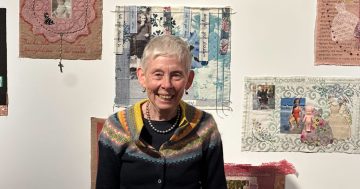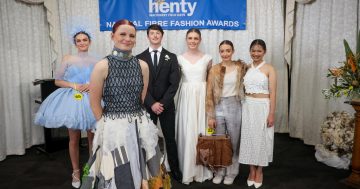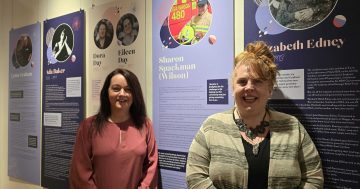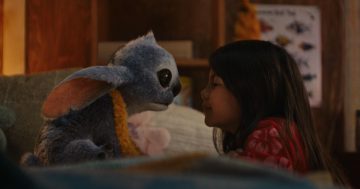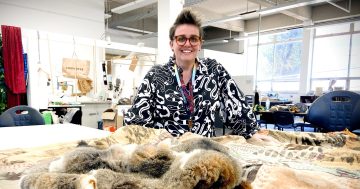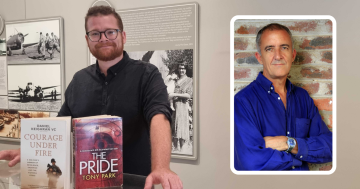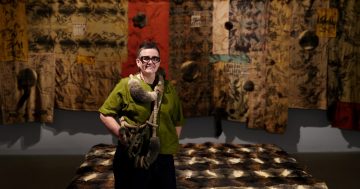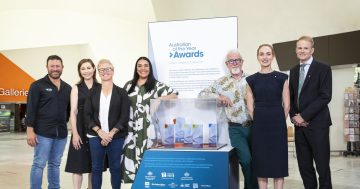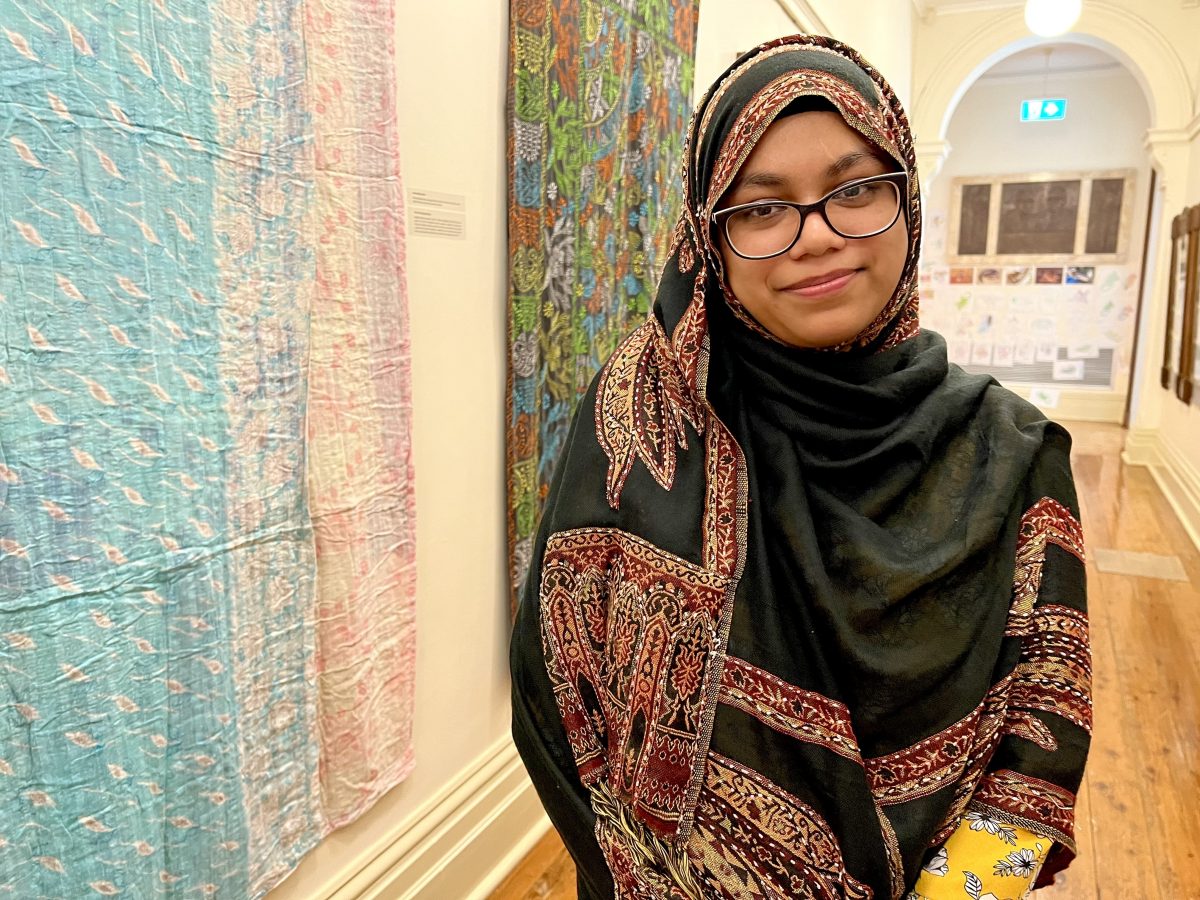
Nusrat Shoumy is sharing her culture and the stories of Bangladeshi women at the Museum of the Riverina. Photo: Chris Roe.
Wagga mum Nusrat Shoumy was reading a story to her daughter when she came up with the idea for an exhibition sharing her Bangladeshi heritage with her adopted hometown in the Riverina.
“We were reading The Katha Chest by Bangladeshi Australian author Raja Chaudhary, and it was a beautiful story and I thought, hey, even my daughter is learning something about her culture which she probably didn’t know,” she said.
Katha are traditional quilts made by recycling old cotton saris, the traditional garment worn by many Bangladeshi women.
It is an art form that dates back centuries and was begun by poor women in rural communities who needed to get the most from discarded pieces of clothing.
“The cotton in the old saris is still very soft and you take three or four of them and then stitch them all together using straight stitches that go all the way from the top to the bottom, and these are called the katha stitch,” Nusrat explained.
“In the book there were all these beautiful katha and the author also told the stories behind the woman whose saris were used to make them, and I was really inspired by that.
“A lot of children nowadays have actually forgotten what these are made of and how much memory and emotion they contain.”

The book ‘The Katha Chest’ provided the inspiration for the exhibition. Photo: Supplied.
Stitches Across Generations is both a collection of katha, showcasing the tradition, and a very personal tribute to the women who made them and handed them down.
“So it’s something you pass on. This one is my mother-in-law’s that she gave to us when we got married,” Nusrat said, running a hand along a bright yellow and golden katha.
“My husband remembers his mother having this sari, so it is very special to him and when he misses his mother, having this around is like a presence there. It’s a very beautiful thing.”
The stories are presented alongside each textile and Nusrat said it had been an emotional experience to see visitors respond to these fragments of her culture and heritage.
“These are all done by hand, so when they come in and see them and they comment on how beautiful it is, it touches me to think that this is something that is in our family and in almost all Bangladeshi families,” she said.
“Many people in Bangladesh are poverty-stricken and the poor woman who made this would never have imagined that it would end up going to another country and being admired by people there.
“When I hear them say it’s so beautiful, I feel like all the hard work that went into the kathas was worth it.”
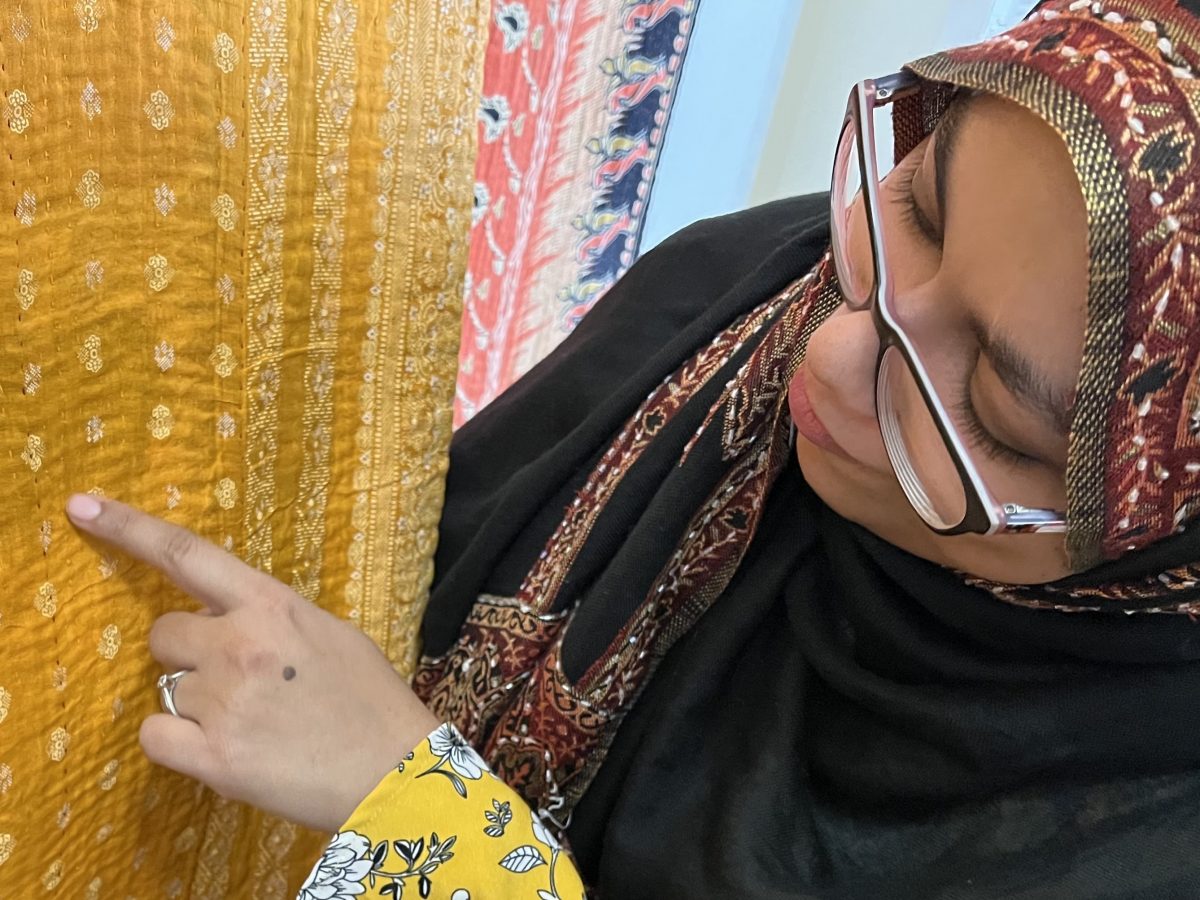
The garments are sewn together using the ‘katha stitch’. Photo: Chris Roe.
Nusrat points out that there is also an Australian parallel that is preserved at the Museum of the Riverina.
“Here in the museum, we have some ‘Waggas’ (or Woggas) which were the Australian quilts made from the flour sacks or old blankets during the Depression times,” she said.
“There was not much material going around throughout the war and I thought it was something that ties the two communities just beautifully. Australian and Bangladeshi we have the same.”
Stitches Across Generations is on display now at the Museum of the Riverina and you can learn more here.







